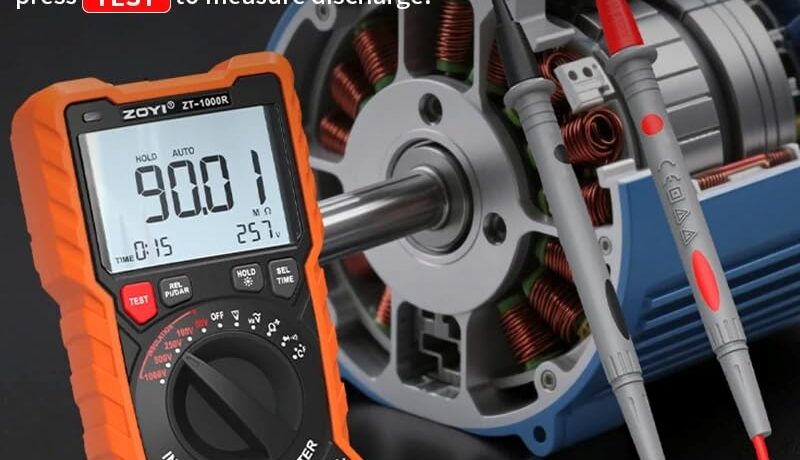How to Perform a Solar PV Insulation Resistance Test with ZOYI ZT-1000R
Introduction
Ensuring the integrity of your solar PV system’s insulation is critical for safety, performance, and compliance with standards like IEC 62446-1. The solar PV insulation resistance test using the ZOYI ZT-1000R combines precision and convenience—ideal for both installers and engineers.
Why Insulation Resistance Testing Matters
Insulation resistance testing is a non-destructive method to measure how well a conductor is insulated from earth. High resistance (in the mega- to gigaohm range) indicates healthy insulation, while low values could signal moisture ingress, leakage paths, or deterioration.
IEC 62446-1 outlines two testing procedures:
- Short-circuit method: Positive and negative electrodes are shorted, and resistance to earth is measured.
- Separate measurement: Measure resistance individually between each electrode and earth without shorting.
Why Choose the ZOYI ZT-1000R
The ZOYI ZT-1000R is a rugged, high-accuracy megohmmeter paired with a True RMS multimeter—capable of measuring up to 1000 V insulation resistance. It’s perfect for both field technicians and engineers needing trusted diagnostics under tough conditions.
Step-by-Step Guide: Conducting the Test
1. Prepare the System
- Fully isolate the solar PV circuit; power electronics and surge protection devices should be disconnected.
- Notify all personnel on-site.
- Equip yourself with proper PPE: high-voltage gloves and safety glasses.
2. Select the Measurement Method
- Use the short-circuit method at night (to avoid arc risk) if high accuracy is needed.
- For safer and easier measurements during daytime, use separate electrode-to-earth testing, though take care with PV-generated currents affecting readings.
3. Connect the Tester
- Short-circuit method: Connect ZOYI leads to the shorted positive and negative conductors and earth point.
- Separate method:
- Connect red probe to the positive electrode, black to earth (then repeat with negative electrode).
- Watch out for PV-generated current interference, which may skew results.
4. Perform the Measurement
- Apply test voltage using the ZT-1000R.
- Look for resistance values above 1 MΩ (IEC standard for systems >120 V DC).
- If the reading is low, consider using the guard terminal (if available) or retesting after cleaning or isolating suspected areas.
5. Interpret Results
- High resistance: Indicates acceptable insulation levels.
- Low resistance: Suggests possible moisture, contamination, or insulation damage.
- Use a relay for short-circuiting to reduce arc risk, especially when testing at night.
6. Finalize and Document
- Discharge any stored capacitance before reconnecting.
- Restore system to normal operation.
- Log test conditions: ambient temperature, voltage applied, resistance values, and any remediation actions taken.
Summary: Best Practices at a Glance
| Step | Highlight |
|---|---|
| Keyword focus | “Solar PV insulation resistance test” |
| Test preparation | Isolate, notify, wear PPE |
| Method selection | Short-circuit (night) or separate electrode |
| Execution | Use ZOYI ZT-1000R per IEC62446-1 |
| Interpretation | Pass if R > 1 MΩ; troubleshoot otherwise |
| Document results | Log data and next steps |

